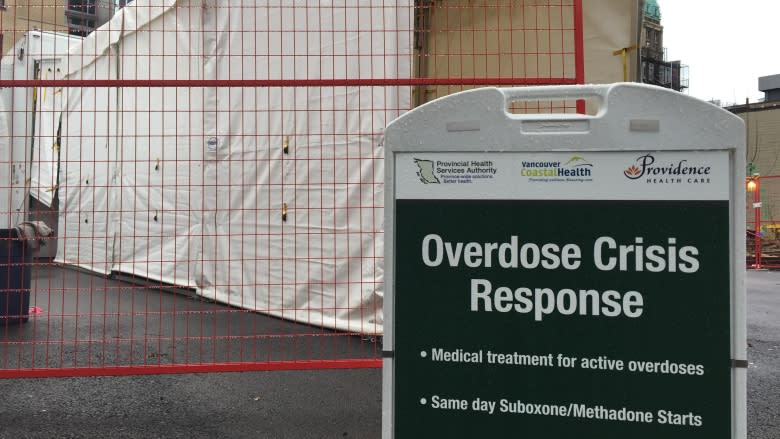On-the-ground health initiatives make big impact on DTES opioid crisis
Though Vancouver's overdose crisis shows few signs of slowing, the city's chief medical health officer, Dr. Patricia Daly, says the concentration of prevention services in the Downtown Eastside is making a difference for drug users in the area.
Vancouver Fire and Rescue Services says it received 174 overdose calls last week — the highest number recorded in one week so far this year.
During the time period of Feb. 26 to Mar. 5, Vancouver police logged 14 suspected overdose deaths.
Daly said while 14 deaths is 14 deaths too many, the coordinated efforts in the Downtown Eastside — including a mobile medical unit and overdose prevention sites — has created some change.
"Although there were 14 deaths last week, only three of those were in the Downtown Eastside, and there were actually more deaths outside the Downtown Eastside," she said.
"I think that's evidence of some of the initiatives we've put in place in the Downtown Eastside to make sure people aren't consuming their drugs alone."
Daly said the overdose prevention sites in the neighbourhood were reporting upwards of 500 to 600 visits per day.
"It's a geography where it makes sense to have many overdose prevention sites because we have many people living in a small geographic area who will make use of those services," she said.
She said the sites and mobile unit have also been crucial to helping people start opioid substitution programs.
"We also put an addictions physician in that unit and over time, more and more of the people dropping into visit ... want to start on suboxone," she said.
Overdoses took the lives of 922 British Columbians last year and 116 more in January of this year, according to the B.C.'s Coroners Service.
With files from The Early Edition
To listen to the interview, click on the link labelled Mobile medical unit makes positive impact on DTES opiod crisis, says Dr. Patricia Daly



